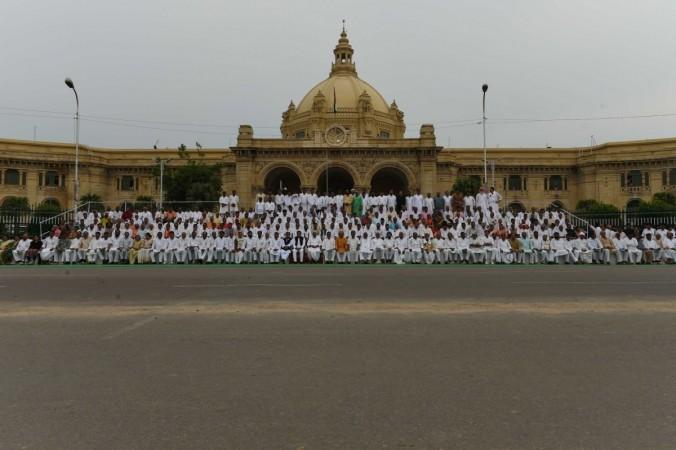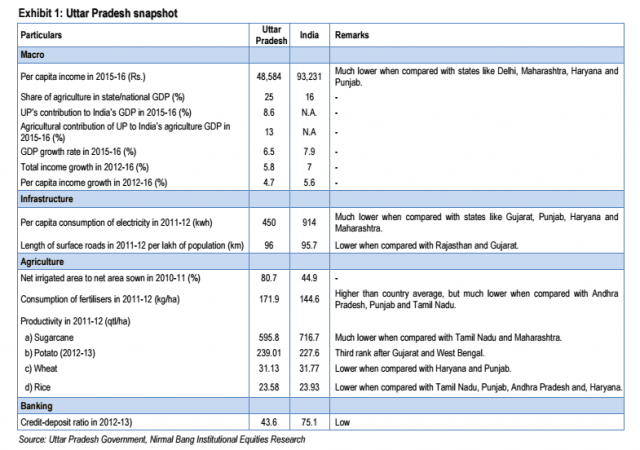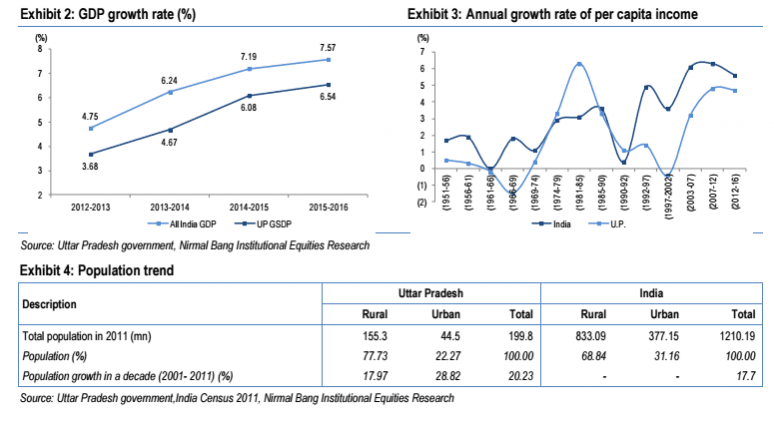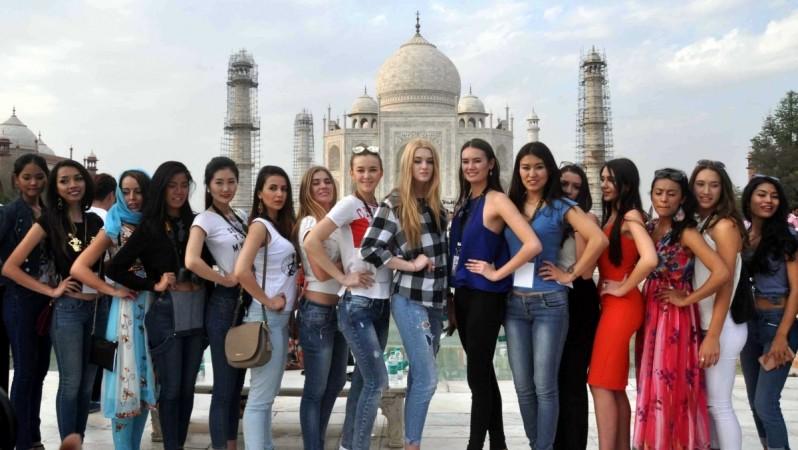
With the Bhartiya Janata Party (BJP) wresting power from the Samajwadi Party after winning a landslide victory in Uttar Pradesh, the state is poised to witness fresh interest from investors, given the pro-reforms image of the party.
The party won 312 seats and its allies 13, taking the strength to 325 in the 403-member Uttar Pradesh Assembly, ousting the Akhilesh Yadav government of the SP. Earlier, the state was ruled by Mayawati of the Bahujan Samajwadi Party (BSP) from 2007-2012.
Uttar Pradesh has a population of about 21 crore, or approximately a sixth of India's population. Its significance in Indian politics, especially at the Centre, is well-known. Further, given the Modi government's imprint in BJP-governed states, Uttar Pradesh is bound to be driven by the Centre's policies and programmes.
Most of the prime ministers have either hailed from the state or at least represented it in the Lok Sabha, including Prime Minister, whose constituency is temple town Varanasi.
Agriculture is the single biggest segment of the state's economy; it contributes about 25 percent to the state's gross domestic product (GDP) as against the national average of about 16 percent. Uttar Pradesh is the biggest sugarcane-growing state, apart from contributing significantly to wheat, rice, fruits and vegetables.
The state is home to many industries, both large-scale as represented by India Inc. as well as traditional occupations such as glass (Ferozabad, near Agra), brass (Moradabad), and perfume (Kannauj), to name a few. In terms of tourist hotspots, the state has the biggest attraction, the Taj Mahal, one of the seven wonders of the world, besides other monuments.
A research team of brokerage Nirmal Bang Institutional Equities (NBIE) conducted an extensive survey/study of the vast state to get a reality check of the state.
Here are the key takeaways from the visit by the NBIE team comprising Teresa John, Gaurang Dadwal, Mangesh Bhadang, Chirag Muchhala, Abhishek Navalgund, Hitesh Joshi, Amit Agarwal and Sara Jaffer:
Clear mandate a big plus
The decisive mandate from voters in favour of the Bharatiya Janata Party (BJP) in UP is certainly a big ray of hope for growth from a long-term perspective as the Centre-State collaboration on various development schemes, especially in rural areas, could witness significant improvement.
Poll promises and impact
On a near-term basis, the BJP manifesto had also talked about loan waiver for small farmers and better minimum support prices (MSPs) for crops (most farmers that we interacted with on the ground were expecting the government to add a special bonus amount to wheat MSP which will be announced in a few weeks), and a favourable announcement in this regard could inject some buoyancy.
However, some traders also cautioned that the new administrative machinery could take some time in settling down and deciding on priorities, which could be a short-term overhang on spending, especially by government departments.
Agriculture, demonetisation
Besides crop surplus in other large agrarian states like Maharashtra, Madhya Pradesh, Punjab and West Bengal, the price situation was also influenced by demonetisation and contrary to expectations, inferior yield quality in the state.
A significant price deflation of more than 10 percent was seen in grains (wheat and rice) and more than 20 percent in horticulture produce (potatoes and tomatoes).
Considering that nearly two-thirds of the workforce in the state is dependent on agriculture, clearly, poor growth trends in farm household income and recent demonetisation event have disrupted consumer goods trade, which has not yet seen normalcy (most stakeholders reported continued decline of 10-20 percent in sales).
It is among the largest producers of sugarcane (35 percent of India's total production) and wheat (over 25 percent of total production). Sugarcane production in UP is expected to be good even as other sugarcane-producing states face a drought, and therefore sugarcane farmers in the state are likely to benefit from higher prices as well as yield.
Sectoral impact of note ban
Demand trends in cement and real estate sector have also been fairly sluggish and apart from government contracts, there was no immediate catalyst on the horizon for revival.
India Inc. in the state
Companies that have significant salience include Maruti Suzuki and Hero MotoCorp (Automobiles), UltraTech Cement and ACC (Cement) Hindustan Unilever, Dabur (Consumer Goods), Havells and Crompton Greaves (Consumer Electricals), V Mart (Value Retail).
Significance for automobile sector
Uttar Pradesh is a big market for automobiles, given its huge population base. In two-wheelers, it has the biggest market with 14 percent contribution to industry volume, while in tractors it is the second-biggest with 13 percent volume contribution. In the case of cars, it is the fifth-biggest market with 7-8 percent contribution to industry volume.
Cement consumption
The state is one of the top 3 cement consuming states in India with annual cement consumption in excess of 30 million metric tonnes. However, in terms of per capita cement consumption, it still lags behind several other states in India, indicating a vast potential for further growth in cement consumption.


In terms of tourist hotspots, the state has the biggest attraction, the Taj Mahal, one of the seven wonders of the world, besides other monuments, temples and mosques. Many travel and tourism portals list the Bada Imambada in Lucknow, the ghats of Varanasi and the Agra Fort as some of the top tourist places, besides the Taj Mahal.

The Mathura-Vrindavan places of worship, including the Shri Krishna Janmbhoomi temple, also draw many devotees every year, especially on special occasions such as Janmashtami and Holi.















